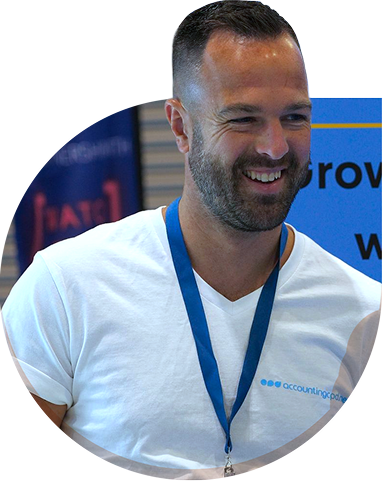Smart CPD for Smart Accountants
Designed to serve smart finance professionals who use their CPD not just to stay compliant – but to build the careers and lives they love.
- All Your CPD in One Place: Find every topic you need in one platform – no juggling logins, links, or learning providers.
- Less Searching, More Learning: Save hours with curated, high-quality materials that get straight to what matters.
- One Certificate – All Your Learning: Every video, module, and minute you complete is automatically tracked and added to one cumulative CPD certificate.
- For Pros, by Pros: Learning designed by active finance professionals – relevant, practical, and ready to use.








Why Settle for Merely Ticking the Box, When You Can Truly Excel?*
*pun not intended
25 years ago, CPD for accountants was a chore: expensive, time-consuming, and disappointing. It ticked the compliance box, but it didn’t help you grow. So we fixed it.
AccountingCPD brings you over 1,500 expertly crafted resources, all in one place. Designed by practitioners, packed with real-world cases, and built to make learning stick through practical exercises.
Because you deserve smart, focused, no-fluff CPD that powers your career and your practice without draining your time or energy.

Claim Back Your Time. Stay Ahead With Ease
You already know CPD is vital. You also know that staying sharp keeps clients happy, colleagues confident, and your work stress-free.
What if it is effortless?
With AccountingCPD, you get all the knowledge you need, all in one place, curated by experts who ensure you're always prepared, always up to date, and never wasting time hunting for resources.
Choose your access level
Pick the learning packge that best fits your needs, requirements and budget.

Testimonials
Self paced learning, Directly relevant to today's work environment. I learned new skills and developed awareness of transformation tools. Assessment focused me to really pay attention which made learning more enjoyable.
The online course provides a good alternative to face-to-face with the use of the different mediums, i.e. video, interactive slides and notes.
Great course logging all the hours required for annual ACA compliance while covering a range of relevant topics. Technical, practical, economic and emerging trends are all covered.
Very useful, contained many useful information about functions, graphs in excel, that I will be able to use in my daily job as well.
Nicely constructed, clear material, good balance of input, case-study, quizzes, and personal reflection. Helped me to gain a perspective on application within my company and to take first steps. Also helped me to understand where I might require assistance from a professional.
The flexibility of an online course is invaluable when balancing work with a young family. I liked the structure and the fact that I could see how others had responded to the questions - it was like being in a lecture hall and sharing ideas. Thought provoking ideas
Finally found something. I detest "CPD" courses for the sake of building /tickboxing
Followed a simple structure that was easy to navigate. Concepts were built upon step by step, easy to follow and concise.
Over the last ten years, AccountingCPD has helped transform the way our members do their CPD and enabled them to develop into the fully rounded finance professionals they need to be to embrace the future.
AccountingCPD gives our hybrid team the flexibility to learn anywhere and the freedom to choose courses that fit their goals. As accountants in industry, we value its practical, relevant approach that supports growth and strengthens our business.
We switched to AccountingCPD because our previous provider seemed a bit tired and was unresponsive to our needs. We’re really pleased we did. The site is clean and fresh, offers more functionality, better CPD resources and a wider range.
AccountingCPD offers a better CPD experience. Our people have been positive about the move. They like the idea that they can access so much content on demand. Also, the CPD Bites are popular. We didn’t know that the accountingcpd team would be as responsive and helpful as they have been, even publishing additional material specifically because we asked for it.
The accounting CPD courses are particularly beneficial to me as they are not just webinars, they are broken down into articles, videos, interactive questions and quizzes. I therefore find them a lot more engaging and find I can learn more from them.
The portal allows me and my team to keep up to date with any new accounting developments. The bite sized modules are very useful, particularly for someone who cannot spend a full day on a course. With the vast number of courses sorted by topic option; it gives you the flexibility to spend time on courses where there may be specific business impact.
Unlimited licence for you or your team
Brain-amplifying accounting cpd training courses
Benefits:
- 365-day access
- All-inclusive access
- Regular updates
- LIVE expert-led webinars
- CPD Bites (15-minute summaries)
Comprehensive, relevant, topical, quality writers, constantly being updated and upgraded. Exceptional value for money.
The online course provides a good alternative to face-to-face with the use of the different mediums, i.e. video, interactive slides and notes.
Very useful, contained many useful information about functions, graphs in excel, that I will be able to use in my daily job as well.
Finally found something. I detest "CPD" courses for the sake of building /tickboxing
One Subscription, One Cost, All The Knowledge
No more ad-hoc searching for the right training and resource. No more excuses that the information is hard to find. A team licence for AccountingCPD’s platform will solve problems you see and some that you don’t even realise that you have!
Managed for you by a dedicated account manager, your team will have the information they need at their fingertips 24/7, and you will always be in the know of who’s engaging, who isn’t, who may need support, and who is your learning superstar!
Benefits:
- 365-day access
- All-inclusive access
- Regular updates
- LIVE expert-led webinars
- CPD Bites (15-minute summaries)
The portal allows me and my team to keep up to date with any new accounting developments. With the vast number of courses sorted by topic option; it gives you the flexibility to spend time on courses where there may be specific business impact.
AccountingCPD offers a better CPD experience. Our people have been positive about the move. They like the idea that they can access so much content on demand.
The accounting CPD courses are particularly beneficial to me as they are not just webinars, they are broken down into articles, videos, interactive questions and quizzes. I therefore find them a lot more engaging and find I can learn more from them.
Over the last ten years, AccountingCPD has helped transform the way our members do their CPD and enabled them to develop into the fully rounded finance professionals they need to be to embrace the future.
About Us

AccountingCPD is your trusted partner in Continuing Professional Development (CPD). For over 25 years, we’ve delivered expert-led CPD for accountants at every stage of their career.
With 1,500+ practical learning resources and a focus on real-world application, we make it easy to stay ahead on technical skills, regulatory updates, and strategic thinking, whether you’re a finance leader, practitioner, or just starting out.
- 365-day access
- All-inclusive access
- Regular updates
- LIVE expert-led webinars
- CPD Bites (15-minute summaries)

We believe CPD should do more than tick a box. That’s why every course is built for active learning, featuring real-life case studies, interactive exercises, and reflective prompts designed to make knowledge stick.
Whether you’re sharpening your own edge or upskilling your team, AccountingCPD is the go-to platform for CPD that drives results and transforms careers.
- 365-day access
- All-inclusive access
- Regular updates
- LIVE expert-led webinars
- CPD Bites (15-minute summaries)
These companies are already amplifying their accounting knowledge. join them!






Latest Articles
Frequently asked questions
-
AccountingCPD courses can be used towards your verifiable/structured CPD requirements for most accounting professional bodies. A certificate of completion is provided as evidence for each course completed with us.
To find out more about your professional body CPD requirements, and whether AccountingCPD can help met them, visit the Why accountingcpd? page and scroll down.
-
An AccountingCPD annual licence is a 365-day subscription to all CPD available on our website and any CPD resource that is published during your 365-day subscription period.
This includes CPD courses, Update Programmes, Career Progression Pathways, webinars, CPD Bites and more.
-
Yes, AccountingCPD offer team subscriptions to our annual licence, for teams of 2 or more.
about how AccountingCPD can help your business or practice.
-
You can access your AccountingCPD courses immediately after purchase. Once you have completed the payment process you will be taken back to your Dashboard. Your purchase will be listed on the right-hand side of the page, under the heading “Active”. Click on a course and you will be taken straight in.
All CPD purchases will also be displayed on the Homepage underneath “My CPD”. You are also able to access your courses here.
-
You can access your AccountingCPD course(s) as often as you want to during your 120 days access period. Just go to your Homepage or Dashboard to access your courses.
If your access period has expired, you will still be able to view and download your CPD Completion Certificate via your Dashboard Page, providing you have satisfied the completion criteria.
-
Yes, you will receive a certificate of completion, which you can print out once you have finished each course.












